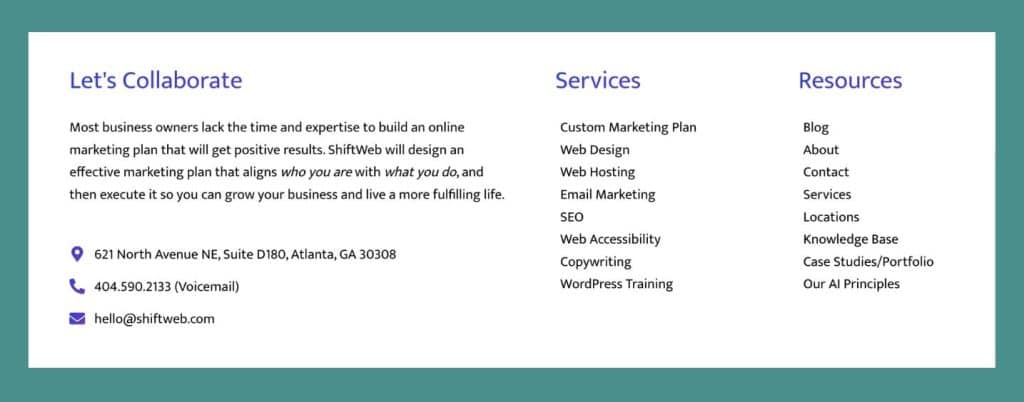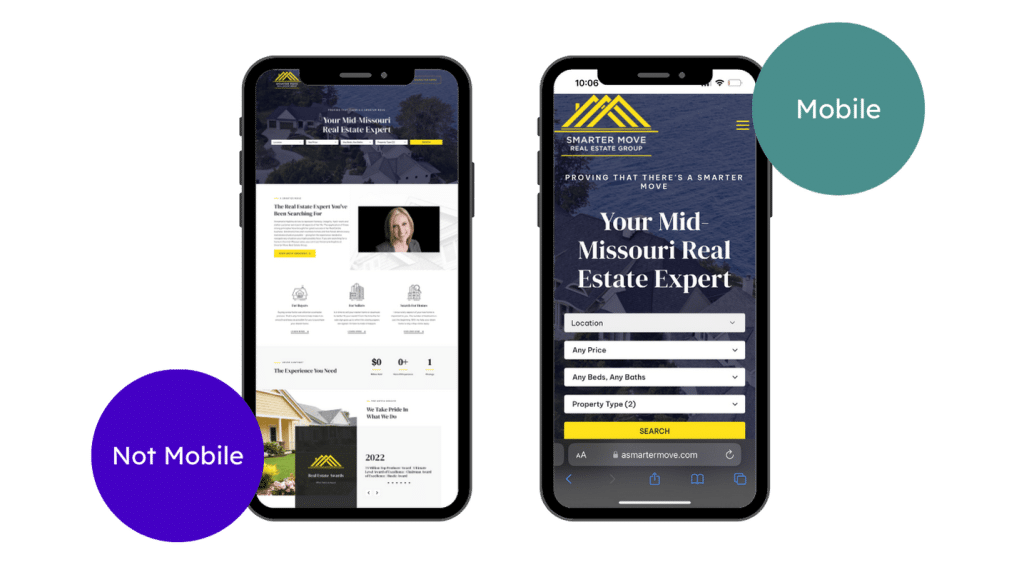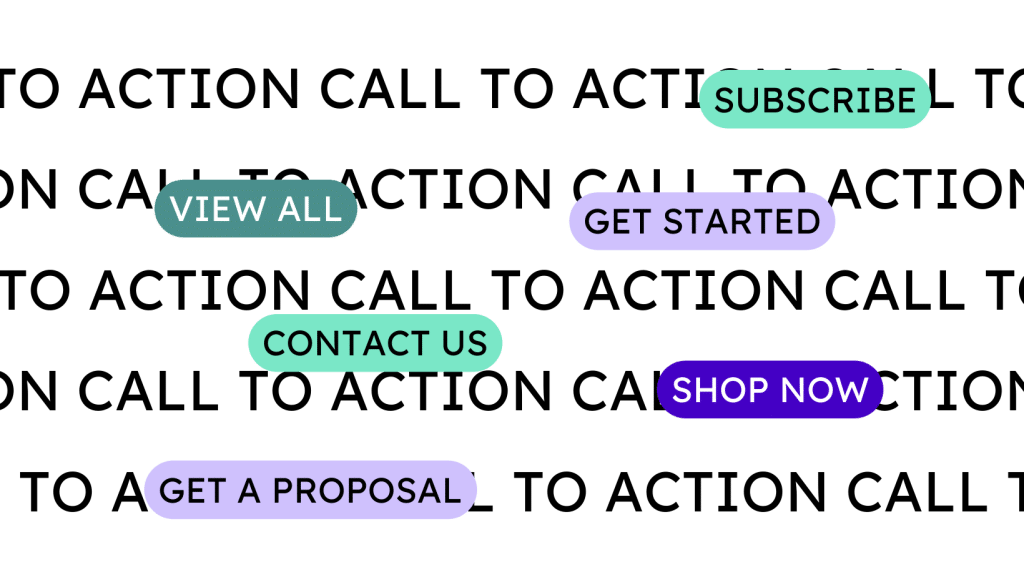Web design trends come and go, but the basics always stay the same. It’s like building a house: you need a foundation and some essential materials to get started, but the details are up to you. If you’re in the process of designing a website or thinking about updating an existing one, we’re about to fill you in on the items that should be front and center in your planning.
1. Simple Navigation
Long ago, when there weren’t many websites competing for attention, businesses could get away with complex, multi-tiered menus and those frustrating mazes of links. Nowadays, with so much content available online, people are looking for direct routes to their destinations.
A simple menu with clear labels is essential. If users can’t quickly find what they’re looking for, 37% of them say that they’ll simply click away from the website altogether.

When it comes to options, a classic drop-down list remains the most popular. But you can also play around with other menu styles, such as hamburger menus, scroll-triggered navigation, and sticky headers. Whichever route you go, the important thing is that it’s easy to use. Intuitivity is key.
2. A Seamless Mobile Experience
During the web development process, you might be tempted to assume that all your users will access the website from a laptop or desktop. Please don’t do it! We’re living in an ever-evolving digital world, and mobile devices are now used for over half of all online activities — including website visits.

Today’s users have grown to expect a fluid experience when visiting a website on their smartphone or tablet (85% of them expect your site to be as good or even better than it is on a desktop). This means that your website needs to be fully responsive and optimized for mobile viewing.
This means that the design should be responsive and able to adjust itself automatically to fit any size of display. If you’re still using an old-school mobile site, it’s time to invest in some updates.
3. A Clear Purpose
One of the worst mistakes you can make is to have a website with no clear purpose. When users land on your page, they should quickly and easily figure out what it’s all about and what action you want them to take.
If your homepage looks like a chaotic jumble of infographics, images, videos, and text without any semblance of cohesion or focus, you’re not doing your business any favors. Instead, keep it simple and make sure that visitors can quickly identify who you are, what you offer, and why they should care.
You want to use your website to show the world what makes you different from the competition while giving users an enjoyable experience that will inspire them to take action. So, keep your purpose at the top of your mind when creating any website, and you’ll be heading down a successful path.
Pro Tip: It’s always a good idea to test out your website design and content on potential users. Ask a few people to use the site and listen to their feedback — it could give you invaluable insights that can help improve user experience.
4. Strong Calls-to-Action
A website’s purpose is to inform and engage users, but in the end, you want them to do something. That “something” could be signing up for a newsletter, downloading an eBook, or making a purchase. Whatever it may be, you’ll need strong calls-to-action (CTAs) sprinkled throughout your site.
If you leave it up to the user to figure out what they should be doing, you might as well kiss those conversions goodbye. CTAs let visitors know exactly where they need to go and can help guide them through your site in the direction that you want, so give them a prominent place on your pages.

Never underestimate the power of a well-crafted CTA, too! Make sure it stands out from other elements of the website, use actionable language (“Get Started Now!”), and make sure the color doesn’t blend in with the background. You can also try experimenting with different sizes and placements to maximize their effectiveness.
5. Attention-Grabbing Visuals
Did you know that users spend an average of 5.94 seconds looking at a website’s main image?
Considering the average attention span is only 8.25 seconds, that’s pretty impressive!
That’s why visuals should play a big role in your web design. Whether it’s compelling videos, stunning images, or eye-catching animations, good visuals can draw users in and encourage them to explore further.
Plus, adding visuals to your website is a great way to break up text and make it look more appealing. In fact, studies have shown that if given 15 minutes to consume content, two-thirds of people would rather read something beautifully designed than something plain.
Not to mention, images and visuals give you the opportunity to show off what makes your business unique in a way that words just can’t.
Pro Tip: Just be sure to keep the file sizes small, so they don’t take too long to load — 39% of people will stop engaging with a website if images won’t load or take too long to load!
6. Cohesive Branding & Design
Your website is an extension of your brand and should clearly convey who you are as a business. From your logo and fonts to colors and images, all elements should be consistent throughout the site to leave visitors with a positive impression.
Having cohesive branding helps users recognize you whenever they see it, which in turn can help boost brand loyalty and recognition. After all, you want users to remember your business and come back for more!
Closely related to branding is design. Every website should adhere to a standard, user-friendly design layout that’s highly on-brand. Every page should look more or less the same and not like a completely different website. This helps create a sense of continuity and ensures that users will have an enjoyable experience as they navigate through your site.
Here’s a statistic to illustrate the importance of good design – 38% of people will stop engaging with a website if the content or layout are unattractive, and 75% of them judge the credibility of a business just by its website design. So, make sure you take the time to create an on-brand website that’s visually appealing and easy to navigate.
7. High-Quality Content
Many businesses think that a blog isn’t necessary for their website, but that could not be further from the truth.
High-quality content is a must-have if you’re going to drive organic traffic and build relationships with your customers. Blogging gives you the opportunity to provide valuable information that can help answer customer questions, demonstrate expertise, and educate potential buyers on why your product or service is the best choice.
Not to mention, good content also helps you rank higher in search engine results and gives you something to share on social media sites. All of these things can help drive traffic back to your website and boost conversions.
And let’s not forget; blog posts keep your website regularly updated with fresh content and keep users on your site for longer.
Pro Tip: Content isn’t just about writing blog posts and articles. Consider creating other types of content like podcasts, videos, webinars, and infographics to keep users engaged with your brand and drive more leads.
8. Social Proof
92% of customers read online reviews before buying, and 88% of consumers trust online testimonials and reviews as much as recommendations from friends or family. The message is clear: people are influenced by the opinions of others, and social proof is a powerful marketing tool.
It makes sense– when customers are deciding whether or not to purchase something, it helps to know that other people have had a positive experience with the product and business.
There are several ways you can incorporate social proof into your website. One of the best is displaying customer reviews and testimonials from real people who have used your products or services. This could be in the form of reviews from third-party sites like Google, Yelp, and Amazon or simply quotes from satisfied customers on your site.
Alternatively, you could display images of customers using your product or feature case studies that show how other businesses have benefited from working with you.
Whatever form it takes, social proof is an important factor in helping to convince potential customers to make a purchase — so don’t forget to include it on your website!
9. Optimized Forms
In order to capture leads and drive conversions, you need an optimized contact form or lead capture form on your website.
When creating a form, think about what kind of information you need to collect from users to move them further down the sales funnel. Depending on your business, this could include name, email, phone number, address, and more.
Make sure the form is user-friendly — try to keep it as simple as possible by only asking for essential information and avoid making users type in their details manually. Including autofill options can speed up the process significantly.
Also, let customers know how their data will be used and provide an option for them to opt-in to any newsletters or marketing emails you may send out. This reassures potential customers that their data is safe with your business and will be used in the right way.
10. Analytics
Finally, to understand how your website is performing and determine its success, you need to be able to track visitors and their activities.
Google Analytics is the most popular tool for tracking website data, and it’s free to use. It provides detailed information about the number of visitors, where they come from, what pages they visit, how long they stay, and much more. Using this data, you can identify which aspects of your website are working well and where there’s room for improvement.
You can also use it to find out what content works best with your audience and adjust your strategy accordingly. Having a good understanding of analytics is key to optimizing your website and driving more business.
It’s Showtime!
Taking the time to add all these elements to your website can help you optimize it for better performance and drive real business results. Remember: the key to a successful website is having all the right components working together. Now that you know what to add, it’s time to get started!
Good luck, and may the optimization force be with you! And if you need a helping hand, don’t hesitate to get in touch with our team at ShiftWeb — it’s what we do best!

